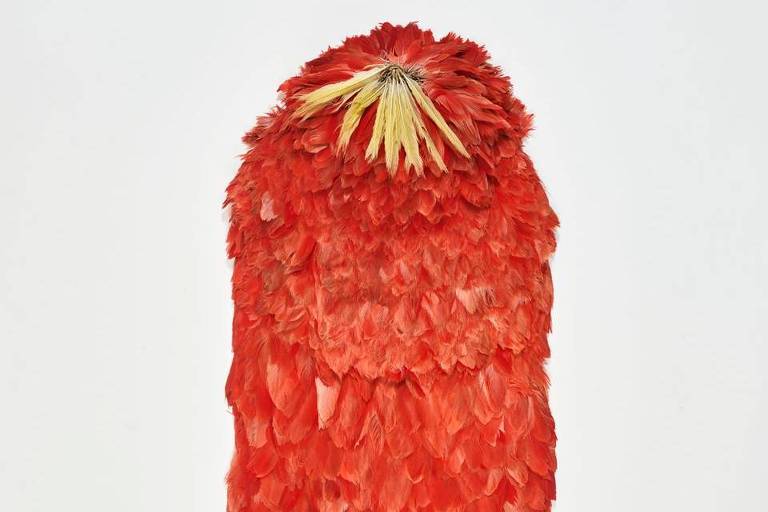For a mantle to be woven by the Tupinambá indigenous people, the territory needs to be calm. With a cotton thread sealed with beeswax, which gives the piece resistance, feathers from different birds are sewn together.
Two years ago, the last garment made had 3,500 feathers and took four months to be woven. The new mantles have awakened a knowledge that was dormant due to the distance between the Tupinambás and the sacred garments of their ancestors, all of them currently in Europe.
Now, just over one meter long and 60 centimeters wide, the tupinambá mantle made in the 17th century with feathers from the ibis, a red bird that inhabits the Brazilian coast, will be returned to Brazil.
It will be received and kept by the Museu Nacional do Rio ( National Museum of Rio). The piece was donated by the Nationalmuseet, in Copenhagen (Denmark), where it had been since 1689.
Despite the Tupinambá mantle being a donation resulting from negotiation between museums, its history is inserted in a context of the return of historical relics to their countries of origin – heating up the debate on the return of archaeological and art pieces removed from their territory during periods of colonization.
Maori skeletons were repatriated to New Zealand in 2016. Last year, Germany returned 20 Benin bronzes to Nigeria, and the Netherlands announced it would return more than 478 artifacts to Indonesia and Sri Lanka.
Translated by Cassy Dias
